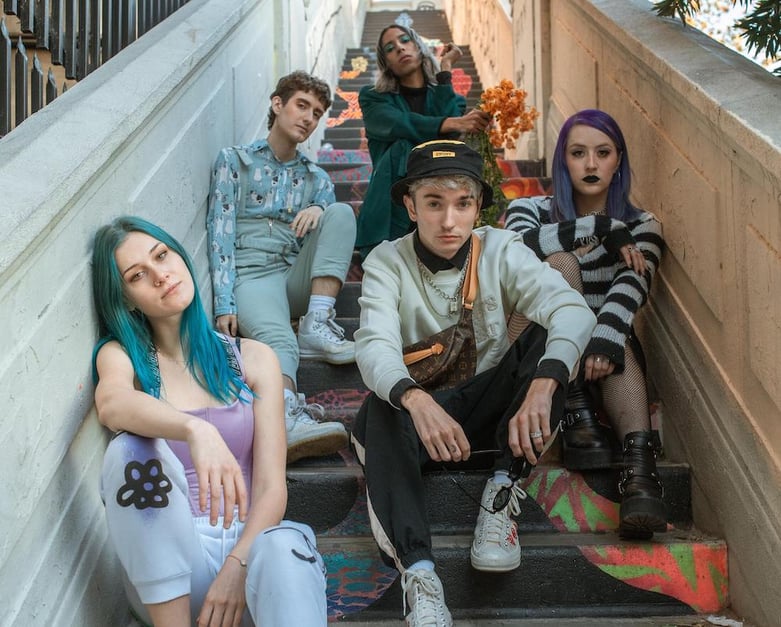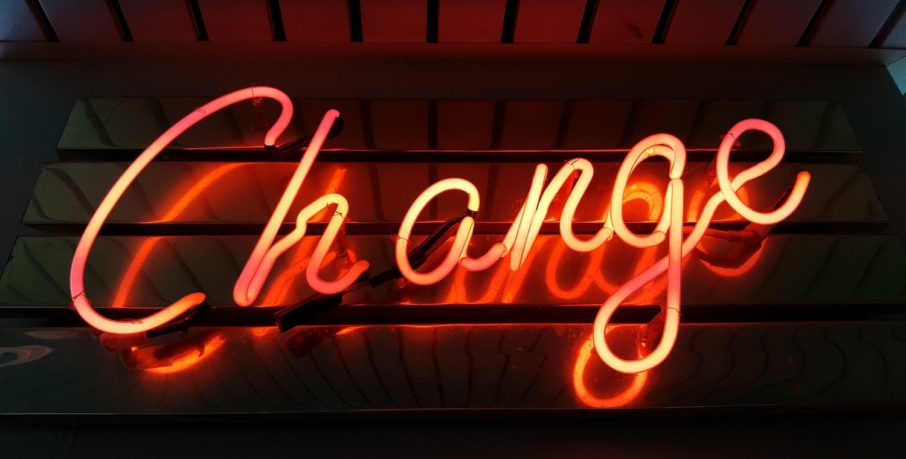Mr. Clean. Mrs. Fields. Pep Boys. CoverGirl.
Everywhere you look, there are product and company names that seem to apply a gender to the brand in question. And even in cases where a brand is not specifically labeled a “Mr.” or “Mrs.”, designers will often use color, typography, and other visual elements to evoke qualities stereotypically associated with one gender or another.
Shampoos marketed to men, for instance, might come in boxy, rugged packaging printed with bold typefaces. Meanwhile, those sold to women might feature soft colors, smooth curves, and delicate, looping fonts. This, despite the fact that the goo inside both bottles is essentially the same.
Why are products and brands so often marketed as being for men or women—or even depicted as being men or women themselves? Why do marketers bother gendering inanimate objects and abstract ideas? And how does the growing number of nonbinary consumers affect the way that marketers should approach gender in their brands?
In this post, we’re going to take a look at the mechanisms behind gendered brands, explore how they work in practice, and discuss ways in which today’s organizations can serve the needs of consumers who may not fit into traditional gender roles.
Why Gender a Brand?
As it turns out, there are some very practical reasons for assigning gender to a brand.
In her landmark research study “Gender Dimensions of Brand Personality,” Concordia University marketing professor Bianca Grohmann discovered that giving a brand stereotypically masculine or feminine traits does indeed have an impact on consumer feelings toward it. As she puts it:
“First, this research demonstrates that marketers can shape gender dimensions of brand personality through their choice of masculine and feminine spokespeople featured in advertisements. Second, gender dimensions of brand personality influence affective, attitudinal, and behavioral consumer responses positively when they are congruent with consumers' sex role identity and thus enable consumers to express an important dimension of their self-concept.”
In other words, Grohmann found that the perceived masculinity or femininity of the spokesperson attached to a brand does indeed influence the perceived masculinity or femininity of the brand itself. What’s more, a match between the perceived gender of a given brand and the “sex role identity” of its target audience tends to create positive feelings toward the brand.
Why? Because an alignment between the brand’s gender and the consumer’s own identity turns the brand into a tool that the consumer can use to “express an important dimension of their self-concept.” That is, it allows the consumer to use the brand to live out their own story—to express their gender to themselves and other people.
This tendency to express gender identity through brand affiliation is quite powerful—and marketers who tap into it have pulled off impressive feats.
Making Coffee Manly: Mr. Coffee and Joe DiMaggio
The “Mr. Coffee” brand—one of the first in a wave of “Mr.” brands that hit the market in the late seventies and early eighties—offers an interesting case study in how gendering a brand can promote positive associations among those who share its gender identity, and even change consumer behavior in remarkable ways.

In her 2012 article “Selling Mr. Coffee: Design, Gender, and the Branding of a Kitchen Appliance,” public historian Rebecca K. Shrum shows how the Mr. Coffee line of electric-drip coffee makers revolutionized coffee-brewing in the United States, by turning it from a “woman’s” job into a task that both men and women were comfortable doing.
Prior to the 1970s, brewing a morning pot of coffee was widely understood to be part of a woman’s daily household chores. That changed, in large part, thanks to a long-running Mr. Coffee advertising campaign featuring famous baseball player Joe DiMaggio as the brand’s spokesman. In multiple TV spots aired over several years, DiMaggio was shown using the machine to make himself a pot of coffee at home—a strange thing for a man to do in those days.
DiMaggio’s association with the brand gradually eased men’s fears that they would be perceived as “unmanly” for brewing their own coffee. After all, if a man’s man like DiMaggio could do it, surely it wasn’t a purely “feminine” activity after all! As Shrum puts it:
“Joe DiMaggio’s masculinity came to reside not only in the product but also in the consumer of that product [...] Having Mr. Coffee—both the machine and DiMaggio—in the kitchen functioned to reassure [men] that they could take on this new role without being emasculated.”
Relating that back to Grohmann’s findings, we see that the DiMaggio campaign allowed men of the 1970s to “express an important dimension of their self-concept” in a realm that had previously felt barred to them—the world of at-home coffee-making. Whereas previous coffee appliances had been marketed almost exclusively to women, Joe DiMaggio’s stamp of approval on the Mr. Coffee machine turned it into a tool that men could use to express their masculinity in unexpected ways.
This innovative approach sold truckloads of coffee makers over many years. And as part of a wider trend in American culture, it helped begin a process of redefining how labor was divided along gender lines, which continues to this day.
Reinforcing Gender Norms: The American Girl Brand
As the Mr. Coffee case illustrates, branding can play a surprising role in redefining what it means to identify with a given gender. On the flip side, branding can also be used to reinforce existing ideas about what it means to be a man, woman, boy, girl, etc.
For decades, the American Girl brand has been a major force in the US toy industry, producing an iconic line of realistic, historically inspired dolls, along with mountains of accessories, branded books, and even films. Researchers investigating the brand found that its particular expression of “girlhood” is a key part of its lasting success.

In a 2009 Journal of Marketing article entitled “American Girl and the Brand Gestalt: Closing the Loop on Sociocultural Branding Research,” a team of marketing researchers published their findings on the brand based on several years’ worth of ethnographic observation at American Girl retail locations in major cities around the country. Among other things, the team found that:
“The American Girl brand [] provides a set of cultural resources for women to deploy in the construction and transmission of a legitimized gender identity. By offering scripts for the enactment of heroic femininity and templates for the replication and perpetuation of domesticity, the brand helps mitigate the effects of cultural contradictions surrounding the contemporary female role.”
To simplify a bit, the research showed that many mothers, grandmothers, and other female relatives use the American Girl brand as a tool for encouraging the girls in their care to develop female identities grounded in certain values. These included “hard work, civility, politeness, attention to the needs of others, and respect for adults.”
The women interviewed for the study often contrasted the American Girl brand with what they perceived as a tendency for pop culture to oversexualize and objectify girls from a young age. From their point of view, the brand offers a set of valuable “scripts” and “templates” about what it means to be a girl, which could help them filter out the shallow, degrading “scripts” offered by the culture at large.
Thus, by participating in the brand, American Girl’s real customers—traditionally minded adult women—gain an enormous, growing toolkit for “express[ing] an important dimension of their self-concept” to their daughters, granddaughters, and nieces. Armed with American Girl dolls, books, and films, these traditionally minded women can fight back against “the effects of cultural contradictions surrounding the contemporary female role,” and offer their girls an alternative grounded in traditional understandings of femininity and widely accepted values.
The Need—and Opportunity—for Nonbinary Brands
While people who identify as male or female currently have more than their share of gender-aligned brands to choose from, those who find themselves closer to the middle of the spectrum are largely out of luck. To date, few companies have explored what it would be like to deliberately create a nonbinary gender identity for their brand (as opposed to crafting a more masculine or feminine brand, or simply ignoring the question of gender altogether).
Obviously, this is a bummer for consumers who identify as nonbinary, and who might like the opportunity to “express an important dimension of their self-concept” by using brands that align with their identity. But it’s also a missed opportunity for marketers in many industries.

Particularly among the Millennial and Gen Z age brackets, the number of people identifying as gender-nonconforming is rising steadily, year after year. According to a statewide study by UCLA, for instance, a whopping 27% of Californian adolescents can be classified as “highly gender-nonconforming” or “androgynous” based on survey responses—and that was back in 2017. Now, and in the decades to come, this growing cohort will be looking for brands that can help them express their identities to the world.
Some corners of the fashion industry have become early leaders in nonbinary branding, offering gender-nonconforming customers a range of products designed to help them look on the outside the way they feel on the inside. Meanwhile, The Phluid Project, a fashion collective launched in March 2018 by Robert Garett Smith, gathers a number of these brands together under one roof, and also offers articles and other resources related to nonbinary identity.
While these projects are a start, there’s still a whole lot of room for nonbinary branding to grow into its own—and a unique opportunity for brand marketers to make choices that will give their gender-nonconforming customers a greater range of expression.




